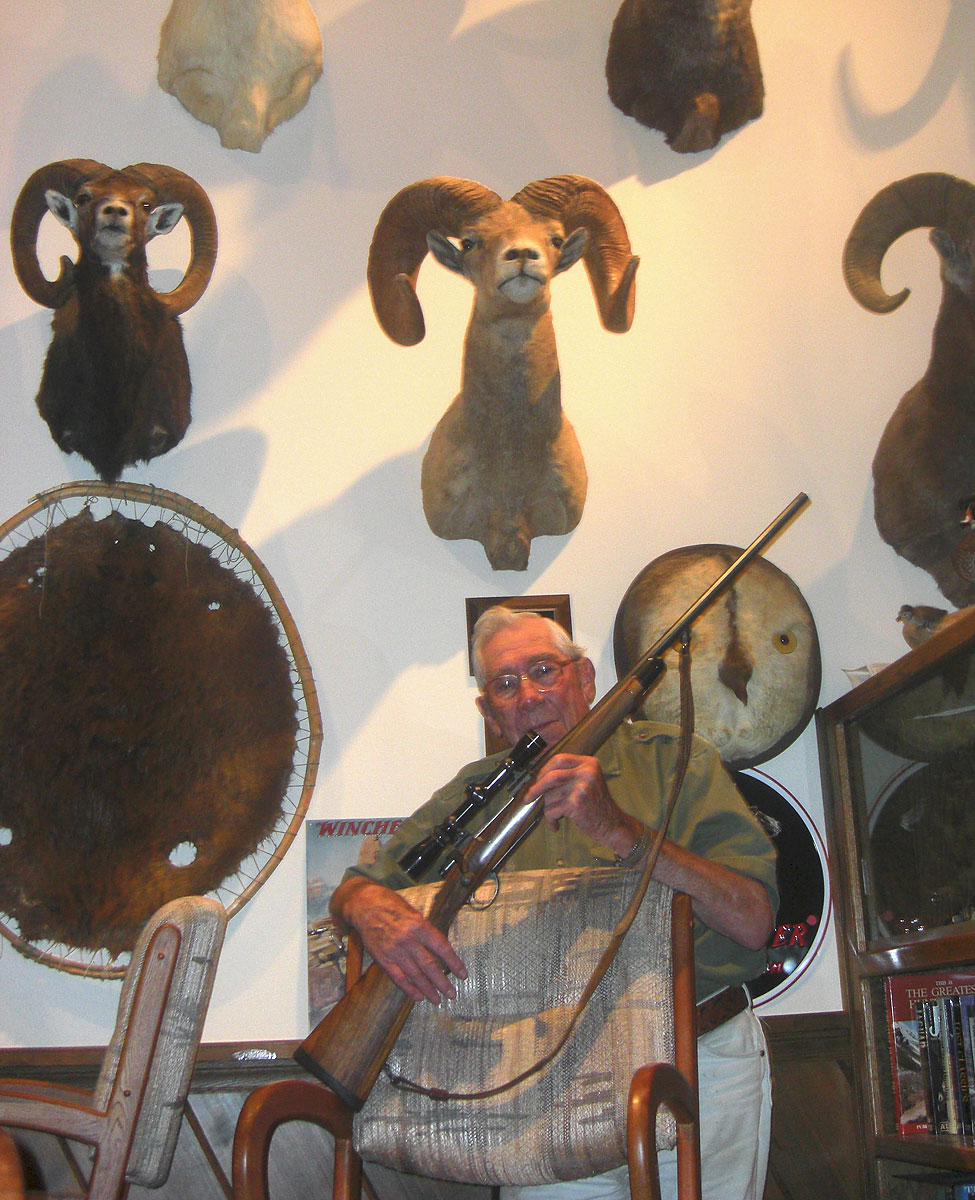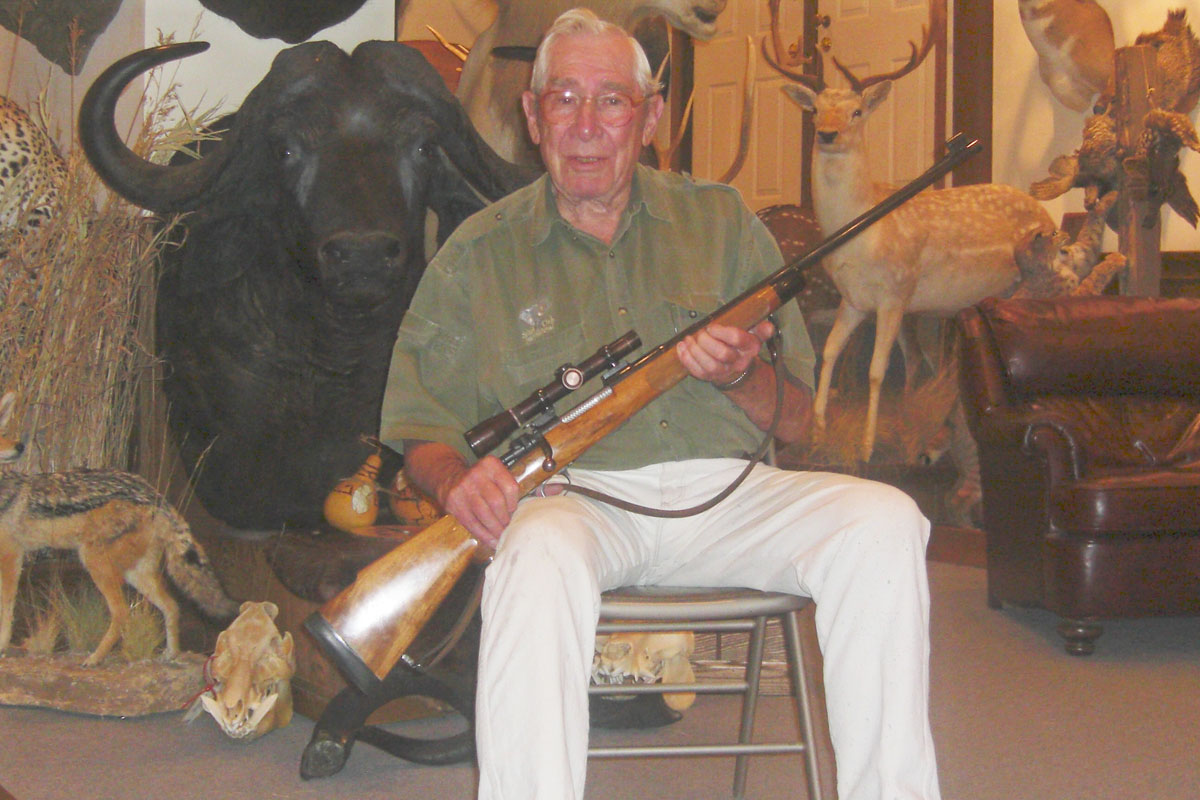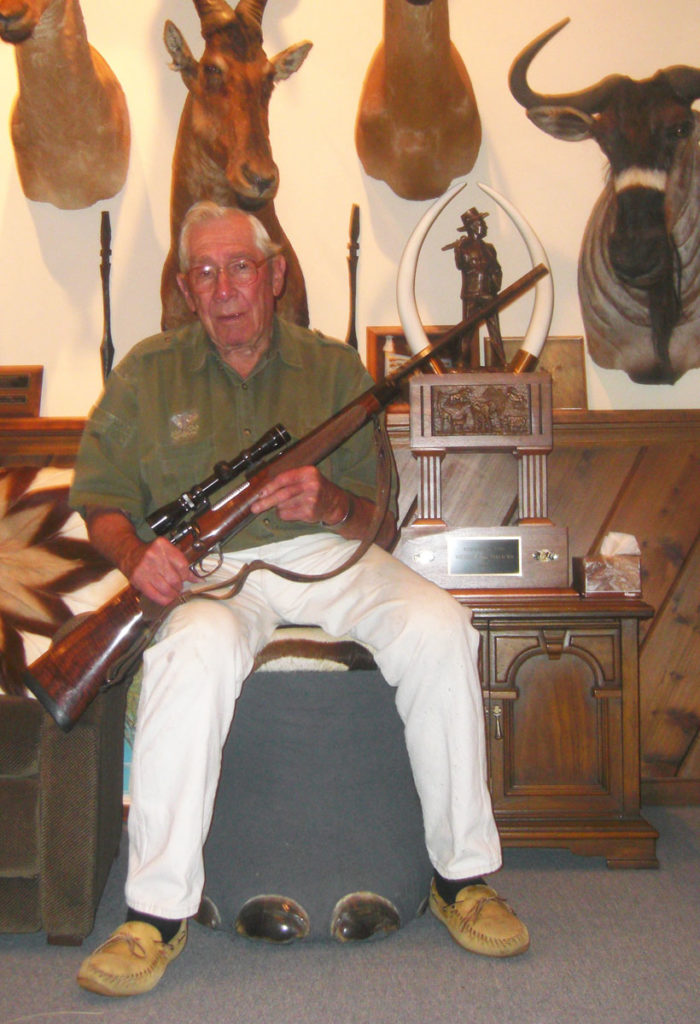 By William A. Nerud, M.D.
By William A. Nerud, M.D.
SCI Life Member William A. Nerud, M.D., is a Korean War-era U.S. Army veteran, retired member in good standing of the Rodeo Cowboy Association, and served for about 20 years as a Washington State Hunter Education Instructor.  
Dr. Nerud is an M.D. Board Certified Orthopedic Surgeon, College of Surgeons, and Diplomat of the Boards.  He is a Life member of SCI, member of the Quarter Century Society, Master Measurer and spent more than 10 years on several committees within SCI, including the Board of Directors, and one year as SCICF Vice President. He received the SCI Conservation and Education award in 1990, Sables “Man of the Year” in 1992, and was inducted into the SCI Hall of Fame in 1994.
He has hunted on five continents, has been on seven African Safaris, completed the Grand Slam of North American Sheep, taken most of the North American 30, as well as African Big 5, plus crocodile, hippo and most of the spiral horns.  
“I do not profess to be an expert, but I am no longer a green hand,” he notes.
Reloading and Ammunition Preferences
I have successfully hunted on five continents and display an excess of 100 species in my trophy room.  Early in my hunting career, reloading was the thing to do. It was enjoyable and economically practical.
On my first professionally guided hunt (for Alaska brown bear), my outfitter inquired regarding ammunition: “The only problems I‚Äôve seen are clients‚Äô handloads–difficult to chamber, misfire due to moisture, etc.¬† You and your ammo will be soaked through before this hunt is completed.¬† You save and scrimp for years, obligate yourself for innumerable honey-do‚Äôs with the little woman and risk it all on a 10-cent handload.” That made sense to me, so I load only for varmint shooting and for an original 1874 old reliable Sharps .45/110.
Among the kinds of ammunition used, I obtained Federal Premium Safari ammo loaded with their “Bear Claw” Trophy Bonded bullets in both .300 Winchester Magnum and .375 H&H Magnum. Retrieved bullets had mushroomed beautifully, and had 90-plus percent weight retention.
Federal Premium .25-06 bullets lost only two grains of weight when retrieved from a Himalayan tahr taken on South Island of New Zealand, and I had excellent results on plains game in the Eastern Cape of South Africa.  The .470 Nitro Express Federal Premium Safari Grade bullet was not retrieved from an elephant it killed.
I have used heavy bullets–300-grain .375 H&H and 200-grain .300 Winchester Magnum– in Africa, desiring maximum impact at usually medium to close range.¬† Also, those have done well in North America on bear, moose, elk and bison.
The .25-06 has proven adequate for pronghorn, mule deer, whitetail deer, blacktail deer and Coues deer.  I used the .300 Winchester Magnum as possible bear insurance on Kodiak Island when I hunted for Sitka blacktail deer there.  Both have been uniformly effective in my hands.  Logistically ammo for these standard calibers is usually available in areas of the world where hunters congregate, which is important if luggage does not arrive.
I remain completely comfortable with my venerable calibers: .25-‘06, .300 Winchester Magnum, .375 H&H Magnum, and .470 Nitro Express with Federal Ammunition.
I attempt to follow the three points of effective shooting: 
- bullet placement
- bullet placement
- Hit him in the correct spot, Dummy!
Favorite Rifle
My all-time favorite rifle is an FN Mauser .375 H&H Magnum.¬† The new-barreled action was a gift in 1967 from a patient whom I had treated during the last year of my Ortho Surgical Residency. He was referred for amputation of his right leg–an old war wound, and he went home walking well on his own two legs, convinced that I knew my business.¬† The action was stocked by a friend, student and prot√©g√© of Al Biesen, gunmaker, of Spokane, Washington, who is well known to the late Jack O‚ÄôConner‚Äôs readers.
From its first hunt, bear in British Columbia, through much of the dangerous game in the world, there was a reflected sensation of quiet confidence and absolute dependability that I have never felt with any other firearm.  It has never been on a hunt and failed to make one or more kills.
The following will explain my faith in the Mauser-type controlled feed and extraction.  In the High Alti of Mongolia, I had taken my Ovis ammon ammon sheep and had a running shot straight away at 17 ibex rams 300 yards, 20 to 25 degrees downhill with a “shoot, shoot” from the native hunter.
One separated and cleared from the group. At my shot, he went down. I heard the bullet strike, but then he was back on his feet and disappeared into a huge rockslide.¬† I circled to come in above him despite terrible footing (it was very steep — thank God for Vibram soles).¬† I missed a snapshot and hit a rock by his shoulder due to a combination of adrenaline, hurrying and poor footing.
My customized Remington Model 700 with its “bump and slide” cartridge feed did not allow the bolt to close.  I stopped and looked, and there was a live round in the chamber, and another live round between it and the bolt face with the bullet tip of the rear round resting on the primer of the chambered round. A bit more pressure and it could have ruined my whole day.
I resolved the problem and killed the ibex with the next shot.
Reconstructing the sequence, it seems as though the bolt moved forward, pushing a shell out of the magazine and into the chamber.  As I stumbled and gyrated in the rocks, the bolt was pulled back and picked up another round.  This is potentially an unwholesome situation.  A dangerous game animal could tear most of the buttons off your shirt in the time required to recognize and resolve the problem.
 My .25-06 Biesen customized Argentine military Mauser and my Model 77 Biesen Ruger .300 Winchester Magnum have controlled round feeding and quietly exude an air of confidence and dependability.
My .25-06 Biesen customized Argentine military Mauser and my Model 77 Biesen Ruger .300 Winchester Magnum have controlled round feeding and quietly exude an air of confidence and dependability.
I believe effective marksmanship is 10 percent equipment and 90 percent mental.  Having established positive relationships would be unwise to change.
Shotguns
My Beretta 686 Sporting Clays gun will at times toss her beautiful Italian head, mutter a few obscenities and refuse to break over 50 to 60 percent of thrown targets.  Other times with a radiant smile, she is almost infallible.  A Super Black Eagle Benelli 3 1/2-inch 12-gauge, a gift from my children, is the most dependable of all.  Mud, snow, freezing rain and a goose blind are no problem.
Sheep and Goats
I have taken the North American Slam of Wild Sheep:¬† Dall in Alaska; Stone in British Columbia; desert in Sonora, Mexico; and California bighorn in British Columbia.¬†¬† All were taken with the .300 Winchester Magnum–nothing over 300 yards.¬† With the .25-‚Äò06, I took aoudad in Texas, mouflon in Washington and Himalayan tahr in New Zealand.¬† I took the Ovis ammen ammen and Ovis ammen darwini¬† High Alti and Gobi with the .300 Winchester Magnum at less than 300 yards.
My late wife and I each killed two of the four Spanish ibex in what was a “community property slam.” Two were taken with her 6mm Remington and two with my .300 Winchester Magnum.
For my Rocky Mountain goats, one was taken in the Cabinet Wilderness area of Montana with a .30-‘06 and one in British Columbia with a .300 Winchester Magnum.
Sheep and goat hunting can become a disease.  Treatment is only palliative with another hunt.  Pre-requisite: positive attitude, good knees and climbing tolerance, a bit of money, a good rifle and competent marksmanship.

